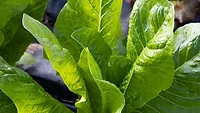Case Study: Clostridium botulinum Poisoning Caused by Canned Pate

Credit: 97/E+ via Getty Images
Clostridium botulinum is a bacterium that produces a powerful neurotoxin that penetrates nerve cells, blocking the release of the neurotransmitter acetylcholine from nerve endings and causing muscles to become paralyzed. However, the bacterium is vulnerable to high heat. At two minutes at 100 °C (212 °F), the bacterium begins to lose its virulence, and it can be destroyed by cooking at this high temperature for ten minutes. This means that cooking fresh food at the boiling temperature of water for ten minutes should kill Clostridium botulinum. The addition of nitrite to preserve foods, especially meat products, is also effective in inhibiting Clostridium botulinum.
Where is Clostridium botulinum Found?
Clostridium botulinum is found in high-protein foods. All animal products are considered to be high-risk for this toxin, including sausage, ham, canned meat, canned fish, smoked meat, and processed meat. Milk and dairy products are also at risk for Clostridium botulinum contamination if the processing or distribution environment is not hygienic. Plant-based foods can be contaminated with Clostridium botulinum, as well. A variety of processed products are susceptible to Clostridium botulinum contamination such as soy sauce, soy products, tofu, bean curd, and raw vegetables.
Symptoms of Clostridium botulinum poisoning appear from 12 to 36 hours after a meal, but they can also manifest up to several days later. A shorter incubation period generally means a greater amount of bacteria has been ingested, resulting in a higher risk of death. Initial symptoms of poisoning include fatigue, dizziness, loss of appetite, diarrhea, abdominal pain, vomiting, and other symptoms of gastroenteritis. At low levels of toxin ingestion, these symptoms will abate within a few hours or a day.
The toxin then further penetrates the peripheral cranial nerves. The most obvious manifestation is damage to the eyes (blurred vision, double vision, drooping eyelids, dilated pupils, no light reflection). Mandibular manifestations include facial paralysis, salivation disorders, dry mouth, difficulty swallowing, hoarseness, and difficulty speaking. More severe symptoms involve weakness and paralysis of the muscles in the upper or lower body, such as not being able to lift one's head, stand, or sit up. Aggravation presents with generalized paralysis, decreased systemic muscle tone, or functional bowel obstruction. The final stage is dyspnea, which is associated with a mortality rate of 30–60 percent due to respiratory failure.
Case Study of Canned, Plant-Based Pate Poisoning
Ten cases of Clostridium botulinum poisoning occurred from mid-July to mid-August of 2020, according to the Food Safety Department of Vietnam. All ten victims were treated in the hospital, with two exhibiting severe symptoms. The two elderly victims with severe symptoms of Clostridium botulinum poisoning reported having eaten canned, plant-based pate. Samples of the leftover pate were analyzed by two separate institutions and found to contain Clostridium botulinum toxin, which can be fatal when ingested in a quantity of less than 0.1 mg.
The Food Safety department convened an urgent meeting with the manufacturer of the pate. The pate was confirmed to have become contaminated with Clostridium botulinum during production. Product recall notices, consumer recommendations, and written requests for handling the case were issued in quick succession.
Preventing Clostridium botulinum Poisoning
Clostridium botulinum is an obligate anaerobic bacterium that lives and grows in the absence of oxygen. It forms spores that survive well in unfavorable conditions. Spores of Clostridium botulinum bacteria exist widely in soil, river water, and seawater; however, in hypoxic conditions, they will germinate, grow, and secrete toxin. Clostridium botulinum poisoning typically occurs when people eat canned foods that do not undergo hygienic processing.
To prevent Clostridium botulinum poisoning, hygienic processing, especially during the heating and sterilization steps, must be maintained. A high-temperature treatment of at least 121 °C (250 °F) is recommended to kill bacterial spores of Clostridium botulinum. Although the spores are difficult to destroy, the toxins produced are sensitive to temperature. Heating food to a normal cooking temperature of around 80 °C (176 °F) for 30 minutes or boiling at 100 °C (212 °F) for ten minutes before eating can significantly reduce the risk of Clostridium botulinum poisoning.
In addition, the preservation of food at cold temperatures (below 4 °C/39 °F) in an acidic environment (pH < 4.6), and the use of preservatives such as nitrite, sorbic acid, phenolic antioxidants, polyphosphates, and ascorbates have been shown to reduce microbial growth and reduce the risk of Clostridium botulinum poisoning. Clostridium botulinum contamination usually occurs with foods that are sealed in an airtight environment (cans, bottles, jars, or bags) during commercial or home kitchen processing.
Consumers are advised not to repack airtight foods into different jars, bottles, or bags to extend shelf life without freezing, as this may result in bacterial growth. Also, if the packaging of a canned food, bottle, or jar is damaged in any way (dents, dings, or any other damage/deformity of the container or seal), it should be discarded and the food should not be consumed. Damaged packaging may indicate unhygienic production conditions, or damage during transport and distribution that may encourage bacterial growth in the food.









